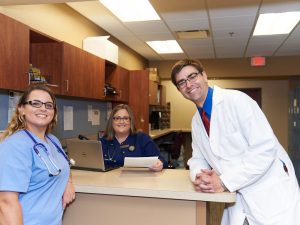

#Scribe medical field how to#
Continue reading to discover how to become a medical scribe as a premed and get one step closer to your earning your white coat. If you’re looking for an experience that maximizes patient interactions and sets you up for a successful transition to medical school-all while fitting nicely with your premed schedule-you’ve come to the right place. With this important knowledge and experience under your belt, you’re sure to become a strong medical school candidate and an excellent medical student. As a medical scribe, you’ll become familiar with the daily functions of medical offices, the different roles of medical staff, and the nuances of maintaining accurate medical records. Plus, working closely with doctors and medical staff will give you the confidence you need to excel in your future clinical and residency placements.Īnother big advantage of becoming a medical scribe is that you’ll be able to witness a wide range of medical treatments and interactions first-hand-much more than what you’ll encounter when shadowing a physician or volunteering in a clinic. You’ll get comfortable interacting with patients and acquire a strong bedside manner, which are big hurdles first-year medical students must overcome.
#Scribe medical field plus#
It’s an active way to meet the necessary extracurricular activity requirements, plus it proves you work well with other medical professionals.īecoming a medical scribe can improve your abilities to succeed in medical school, too. Becoming a medical scribe communicates to admissions committees that you have exactly what they’re looking for. Medical schools look to accept the most competitive medical school candidates-ones who’ve demonstrated a commitment to medicine and acquired meaningful experiences in medical settings. One of the best ways to acquire meaningful patient experiences is by becoming a medical scribe. To learn more about DEI in our fellowship, please click here.If you’re trying to improve your medical school admissions odds, you know that gaining valuable clinical experience is key. We welcome applicants from all backgrounds and strive to promote diversity, equity, and inclusion (DEI) with scholarship opportunities. Prospective fellows can apply to be a medical scribe in 17 different specialties: family medicine, internal medicine, senior care, palliative care, endocrinology, cardiology, dermatology, gastroenterology, infectious disease, radiation oncology, express care, gynecology, pelvic health, clinical pharmacy, nephrology, orthopedic surgery, and chronic fatigue syndrome.

At the end of the fellowship year and based on performance, fellows are eligible to apply for a one year leadership role as a COMET Chief Scribe overseeing teams of our scribes. COMET fellows may choose to pursue external part-time employment opportunities or academic classes in addition to their regular COMET scribing duties.

#Scribe medical field professional#
One of the goals of the COMET Fellowship is to support our fellows' professional growth. The COMET Fellowship provides fellows the ability to connect with faculty and develop a mentoring relationship, as well as the opportunity to engage in research or other scholarly pursuits. Scribing is an unparalleled way to build clinical experience and be immersed in medicine. We are looking for candidates who are academically strong, with excellent interpersonal and leadership skills, who desire an intensive direct patient care experience before applying to medical school, physician assistant school, nursing school, or other graduate school in the healthcare field. They work side-by-side with faculty physicians and other clinicians as experienced medical scribes, seeing patients together at Stanford Healthcare clinics and affiliated clinics in the community. Fellows are trained in medical terminology and clinical documentation. Stanford’s Medical Scribe Fellowship, also known as Clinical Observation and Medical Transcription (COMET), is a one-year post-baccalaureate program designed for highly motivated students interested in pursuing a career in the health professions. Medical scribing is a unique opportunity for prospective healthcare students to observe and participate directly in patient care.


 0 kommentar(er)
0 kommentar(er)
